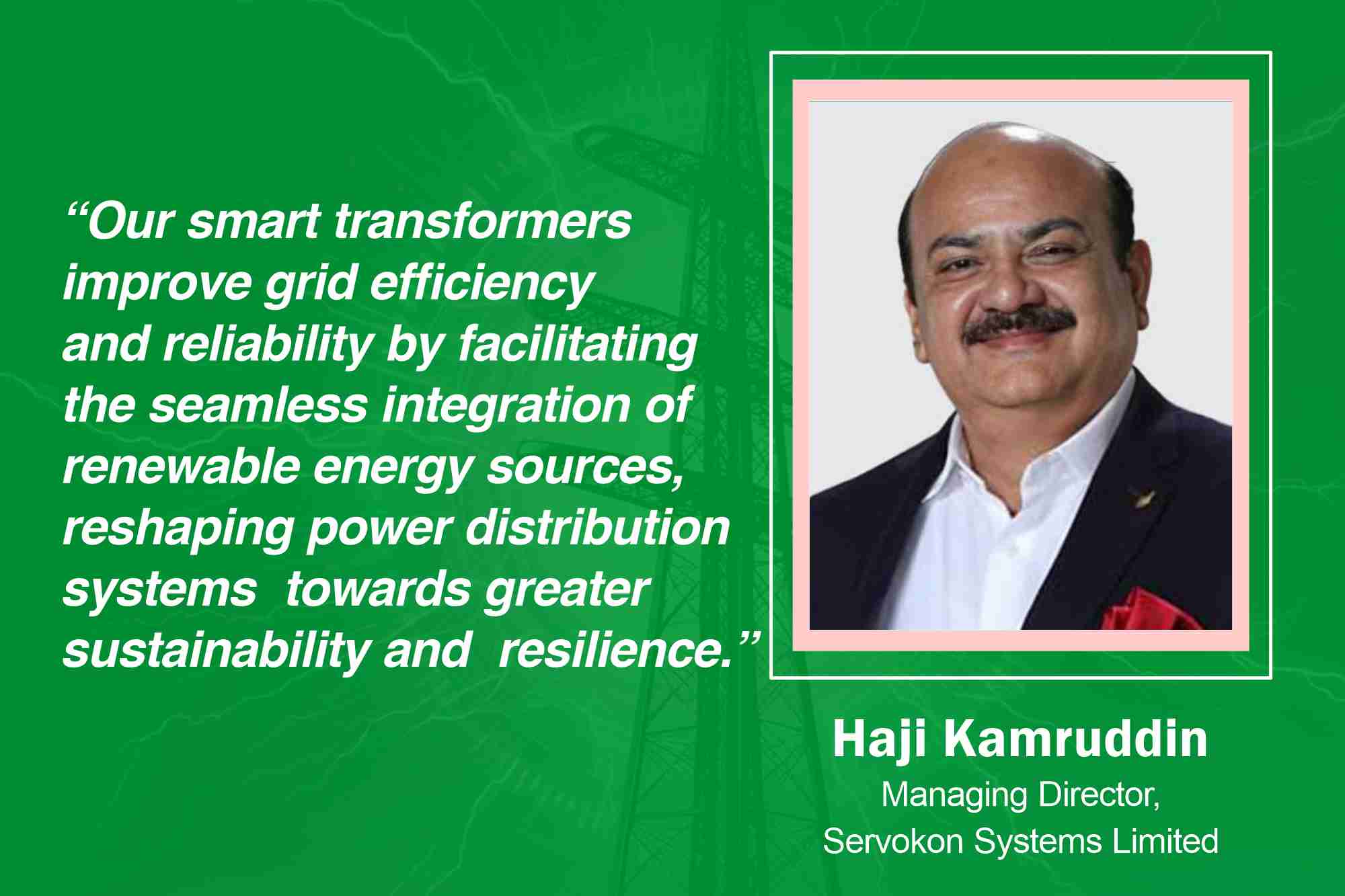Smart transformers are already here for energy management
By EPR Magazine Editorial July 25, 2024 4:54 pm IST
By EPR Magazine Editorial July 25, 2024 4:54 pm IST

Smart transformers play an important role in improving grid efficiency and reliability. They facilitate the seamless integration of renewable energy sources, reshaping modern power distribution systems towards greater sustainability and resilience.
Spokesperson Haji Kamruddin, Managing Director, Servokon Systems Limited
How do smart transformers enhance grid management and distribution?
Smart transformers are advanced devices that integrate digital technology with traditional aspects, equipped with sensors, communication capabilities, and monitoring systems, enabling real-time data collection and analysis. This capability allows them to autonomously regulate voltage and optimise power flow, improving electrical grid efficiency and reliability. Smart transformers detect faults early, isolate issues, and self-heal to prevent widespread outages. They facilitate better integration of renewable energy sources, enhance grid stability, and enable more precise load management. Its intelligence and adaptability make it crucial in modernising grid infrastructure and managing distribution challenges effectively.
What technological innovations drive the evolution of transformer systems in India?
Technological innovations for transformer systems include smart grid integration with IoT lot and big data analytics for monitoring and predictive maintenance. Digitalisation improves efficiency and reliability while accommodating renewable energy integration and fluctuating loads. Advanced materials and design improvements reduce losses and improve energy usage. HVDC technology enables efficient long-distance power transmission, while energy storage integration supports grid stability. These innovations aim to modernise grid infrastructure, improve operational flexibility, and meet sustainability goals amidst increasing energy demands and renewable energy integration efforts.
How is renewable energy creating new market trends for transformer systems?
Renewable energy adoption is reshaping transformer systems by creating new market trends. The variability of solar and wind power necessitates transformers capable of handling fluctuating loads and voltage levels. This has led to innovations in smart grid technology, where transformers integrate with digital monitoring and control systems to manage renewable energy integration effectively. There is a growing demand for transformers for energy storage systems, enabling grid stability and flexibility. These trends drive the developed transformers to be resilient and capable of supporting decentralised energy generation, thus aligning with global sustainability goals.What are smart transformers’ key features and benefits in modern power grid management?
Smart transformers feature advanced monitoring, control, and communication capabilities for real-time data collection and analysis. They autonomously regulate voltage levels, detect faults early, and self-heal to prevent outages. Benefits include better grid stability, improved power quality, and optimised energy efficiency. Smart transformers facilitate renewable energy sources and support decentralised energy generation. They enable predictive maintenance, reducing downtime and operational costs. Smart transformers transform grid management by increasing reliability, efficiency, and responsiveness to dynamic energy demands, thereby modernising infrastructure to meet future energy challenges.
How are government initiatives and regulations influencing the transformer industry?
Government initiatives and regulations in India influence the transformer industry by driving innovation, quality standards, and market dynamics. Policies promoting renewable energy integration spur demand for transformers capable of handling variable power sources. Energy efficiency mandates push manufacturers to develop transformers for lower losses and higher efficiency ratings. Smart grid initiatives encourage the adoption of advanced technologies like smart meters and digital monitoring systems in transformers.
Regulatory frameworks comply with safety, performance, and environmental standards, fostering a competitive market environment. These measures aim to modernise infrastructure, increase reliability, and support sustainable energy transitions across the country.
We use cookies to personalize your experience. By continuing to visit this website you agree to our Terms & Conditions, Privacy Policy and Cookie Policy.